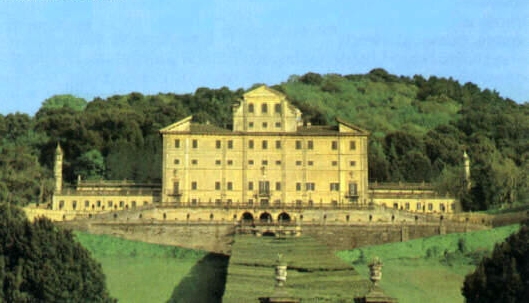
Villa Aldobrandini

The first record of the Villa Aldobrandini date back
to the 16th century when the villa was purchased by the Aldobrandini family.
Prior to this it had been owned by a succession of minor Roman and provincial
noblemen.
At the end of the 18th century it passed into the hands of the Borghese
family, who had in the meantime also inherited all the Aldobrandini possessions.
Several architects and artists contributed to the Renaissance-Baroque-style
design of the villa, but its chief author was Giacomo della Porta. The
main building, which blends artistically with the profile of the hill at
the back, was completed around 1603. The same year, work was started on
the Italian garden, laid out in terraces and water gardens, by the fountain-designer
and engineer Orazio Olivieri of Tivoli.
Inside the villa, the first floor is decorated with frescoes by Amnesio
de Barna and Cavalier d'Arpino. Here also, is the famous bronze bust of
Pope Clement VII, one of the Aldobrandinis. The chapel, dedicated to St.
Sebastian, was frescoed in recent times by Giovanni Piancastelli from Bologna.
The second floor comprises a series of sumptuously furnished rooms.
Between the villa and the hill at the back is the Teatro delle Acque, so
called after the statues in the hemicycles of niches, which used to spout
water and play flutes on command by means of a special hydraulic system
designed by Giovanni Guglielmi.
The allegories depicted in the villa and garden generally refer to the
Aldobrandini family: Atlas bearing the World in the central niche of the
Teatro delle Acque alludes to Pope Clement VII; and the statue of Hercules
about to help him, to Pietro Aldobrandini. The Hesperidian nymphs recall
that mythological and paradisiacal garden and, through transposition, the
enchantments of the Aldobrandini gardens. In the Stanza di Apollo, the
Frascati hills are compared with Parnassus, the sacred mountain of the
Muses, and Apollo with Cardinal Aldobrandini.
This page is courtesy of PIC98